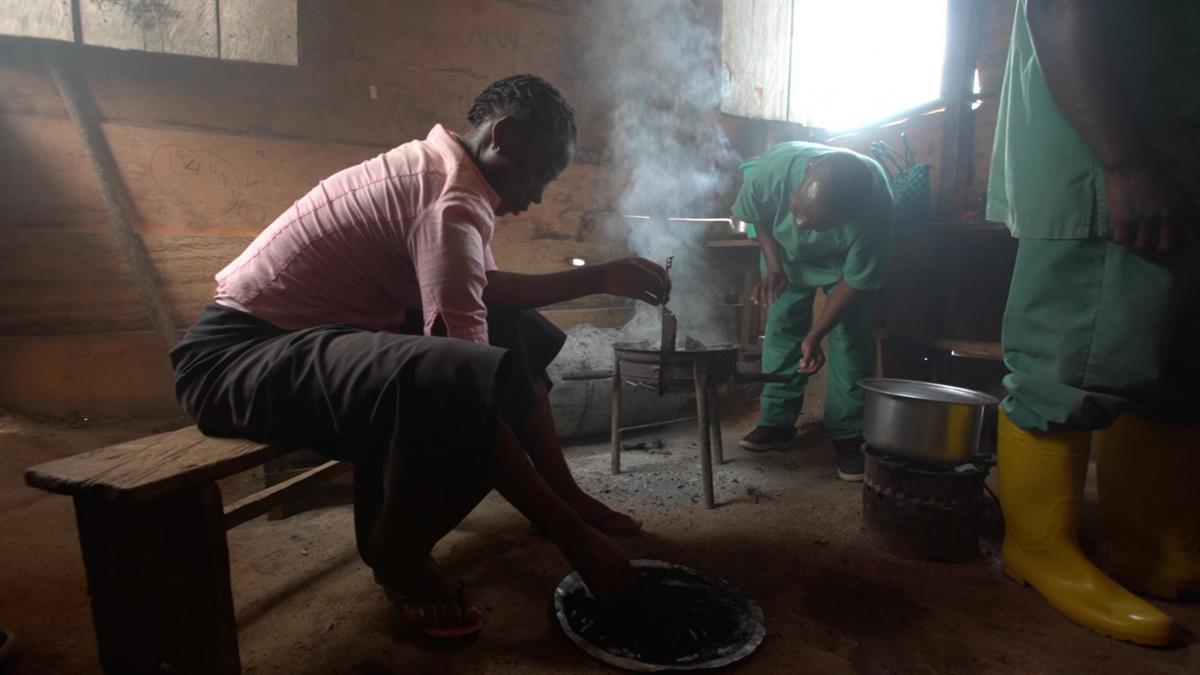
Beni – At the entrance to the Centre de médecine tradi-moderne du village, a health centre offering conventional and herbal treatments, in Beni town, a painted mural shows a man and a woman washing their hands. “Plants are life, handwashing saves lives” a caption reads. In a smoke-filled room inside, a woman cooks green fruits on a charcoal stove and crushes them into a black powder to treat hernia. In the three-bed clinic next door, patients can choose to be treated with plant remedies or with modern medicine by nurses who are trained in both.
When Ebola erupted in the Democratic Republic of the Congo’s northeastern Ituri and North Kivu provinces, traditional practitioners in small clinics such as this were the first port of call for many who fell ill in rural communities. While it was the Democratic Republic of the Congo’s 10th outbreak of the disease, it had never been seen in this part of the country before. Most traditional healers did not triage patients or have basic protection for themselves or their patients. Infection prevention and control was next to nothing. The virus was passed from patient to healer and on to the next patient, with disastrous effects on the mortality rate.
"traditional" - Google News
June 20, 2020 at 08:41PM
https://ift.tt/2YlSYuQ
How traditional healers became allies in Ebola response - World Health Organization
"traditional" - Google News
https://ift.tt/36u1SIt
Shoes Man Tutorial
Pos News Update
Meme Update
Korean Entertainment News
Japan News Update
Bagikan Berita Ini














0 Response to "How traditional healers became allies in Ebola response - World Health Organization"
Post a Comment